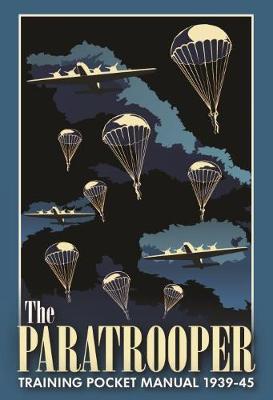Paratrooper Training Pocket Manual 1939-1945

Paratrooper Training Pocket Manual 1939-1945
It quickly became apparent that the physical and tactical demands placed upon paratroopers required men of exceptional stamina, courage and intelligence. To create these soldiers, levels of training were unusually punishing and protracted, and those who came through to take their 'wings' were a true elite.
The Paratrooper Training Pocket Manual provides an unusually detailed insight into what it took to make a military paratrooper, and how he was then utilized in actions where expected survival might be measured in a matter of days. Using material from British, US, German archives and other primary sources, many never before published, the book explains paratrooper theory, training and practice in detail. The content includes details of the physical training, instruction in static-line parachute deployment, handling the various types of parachutes and harnesses, landing on dangerous terrain, small-arms handling, airborne deployment of heavier combat equipment, landing in hostile drop zones, tactics in the first minutes of landing, radio comms, and much more.
Featuring original manual diagrams and illustrations, plus new introductory text explaining the history and context of airborne warfare, The Paratrooper Training Pocket Manual provides a detailed insight into the principles and practice of this unique type of combat soldier.
PRP: 71.93 Lei
Acesta este Prețul Recomandat de Producător. Prețul de vânzare al produsului este afișat mai jos.
64.74Lei
64.74Lei
71.93 LeiLivrare in 2-4 saptamani
Descrierea produsului
It quickly became apparent that the physical and tactical demands placed upon paratroopers required men of exceptional stamina, courage and intelligence. To create these soldiers, levels of training were unusually punishing and protracted, and those who came through to take their 'wings' were a true elite.
The Paratrooper Training Pocket Manual provides an unusually detailed insight into what it took to make a military paratrooper, and how he was then utilized in actions where expected survival might be measured in a matter of days. Using material from British, US, German archives and other primary sources, many never before published, the book explains paratrooper theory, training and practice in detail. The content includes details of the physical training, instruction in static-line parachute deployment, handling the various types of parachutes and harnesses, landing on dangerous terrain, small-arms handling, airborne deployment of heavier combat equipment, landing in hostile drop zones, tactics in the first minutes of landing, radio comms, and much more.
Featuring original manual diagrams and illustrations, plus new introductory text explaining the history and context of airborne warfare, The Paratrooper Training Pocket Manual provides a detailed insight into the principles and practice of this unique type of combat soldier.
Detaliile produsului









